Content may contain affiliate links. When you shop the links, I receive a small commission at no cost to you. Thank you for supporting my small business.
Learning how to mix metals in your bathroom is an excellent way to level up your design. Once you follow a few simple tips, you’ll be mixing and matching different metal tones like a pro!

Mixing metals in your bathroom design creates a visually engaging space that’s both stylish and unique. Gone are the days when you had to stick to one metal finish for your entire bathroom, now, it’s not only acceptable but encouraged to blend various metal finishes to achieve a personalized, multi-dimensional look.
With the right approach, you can effortlessly combine different metals in your bathroom to create a harmonious blend that reflects your style and taste.
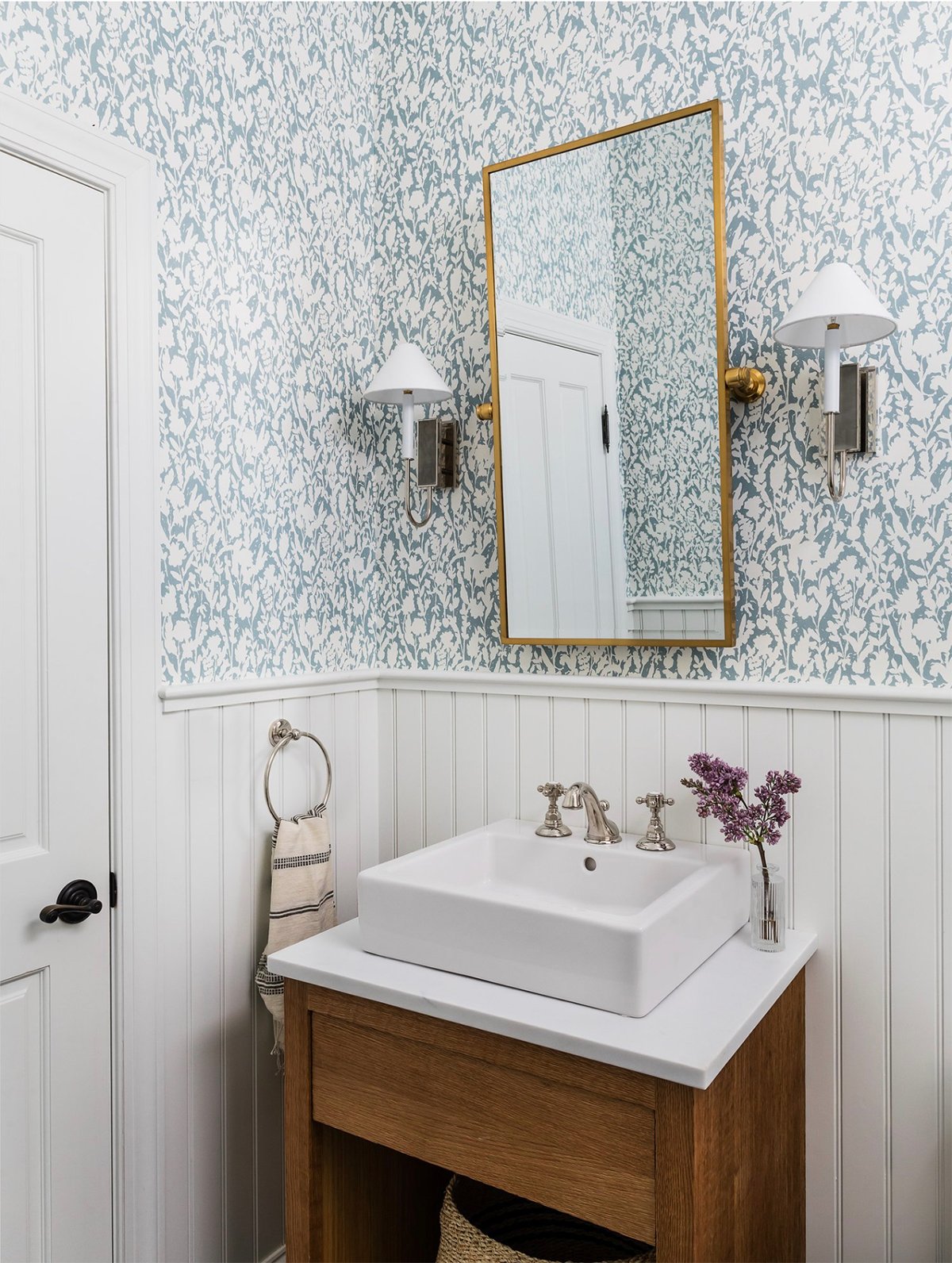
How to Coordinate Metals
When remodeling your bathroom, it’s important to consider the variety of metal finishes available to create a cohesive and visually appealing design. Mixing metals can add texture and visual interest to your bathroom, so don’t be afraid to experiment.
Start by selecting one dominant metal finish for the major fixtures in your bathroom, such as the sink faucet and shower head. This metal can be any of your preferred choices, like brushed nickel, polished chrome, or even something more unique like unlacquered brass or antique brass.
Choose a finish that complements the overall color scheme of your bathroom and sets the tone for the space.
Design Tip
If your bathroom color scheme leans mostly cool, consider adding in brass to warm things up. Conversely, if you have a lot of warmth, pulling in some chrome, nickel or matte black will offer a nice contrast.
Next, consider incorporating accent metals for smaller elements, such as mirror frames, lighting fixtures, toilet paper holder and the towel bar. Choosing one or two contrasting metals in different finishes will add variety to the design.
For example, if your dominant metal is a cool-toned brushed nickel, you might include warm-toned accents like oil-rubbed bronze or brass.
To create a harmonious look, use each accent metal in more than one place. The design “rule” is to repeat the metal in at least 3 places. (It’s also a good idea if one of the metals is already used throughout your home so as to maintain a cohesive flow).

For instance, if you choose aged brass for your towel rings and mirror frame, consider adding brass knobs to your cabinetry as well. Using each metal in multiple spots will ensure a balanced and intentional design.
In addition, be mindful of textures and luster when coordinating metals. Mixing metals with different levels of sheen, such as satin nickel and shiny brass, can add depth to the overall design.
Incorporating finishes with a natural patina or antiqued appearance can also create a luxurious, designer feel without becoming too “matchy-matchy.”
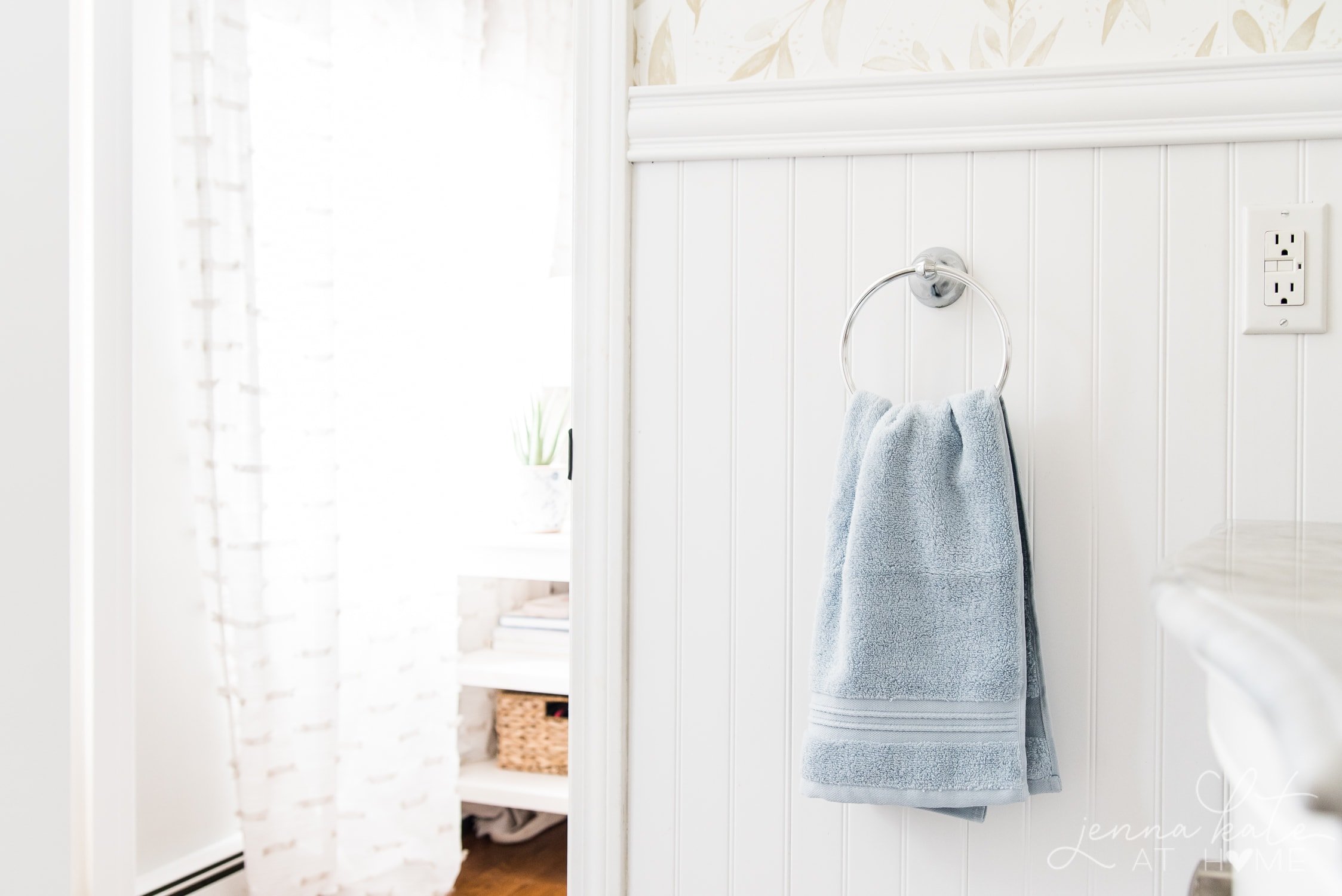
Finally, don’t shy away from experimenting with lighting ideas to showcase your mixed metals. Use lighting fixtures in a combination of your chosen metals to tie the entire bathroom design together, and consider adding a statement piece, like a mirror frame, to create visual interest.
Select and Balance Metals
When it comes to mixing metals in your bathroom, striking the right balance is key.
Placement
When placing these metals around your bathroom, visualize a triangle with three points connecting your main pieces. For instance, if you have a chrome faucet, balance it with two other chrome elements in the room. This will keep the overall look unified while adding visual interest and contrast.
Design Tip: Do Your Homework!
Study photos of bathrooms you love and take note of how they have mixed metals and how those metals are repeated throughout the space.
Understand the Metals
When you plan to mix metals in your bathroom, it’s important to understand the various metals and their characteristics.
Metals are primarily categorized into two groups: Warm Metals and Cool Metals. It’s helpful to know the differences between these metals and how they can be combined to create a harmonious look.
Warm Metals
Warm metals include brass, copper, gold, and bronze. These metals add a touch of warmth and elegance to your bathroom.
Brass – Brass is a popular choice for bathroom fixtures because it has a timeless look and it is both durable and corrosion-resistant.
Copper – Copper has a rich, reddish-brown tone that adds a cozy, rustic feel to your bathroom. It is also known for its antimicrobial properties, which can be a great feature for bathroom fixtures.
Gold – Gold fixtures bring a sense of luxury and opulence to your bathroom. They can add a focal point that elevates the overall design.
Bronze – Bronze is a versatile metal with a reddish-brown hue. It is often used for vintage-inspired bathroom fixtures to create an old-world charm.
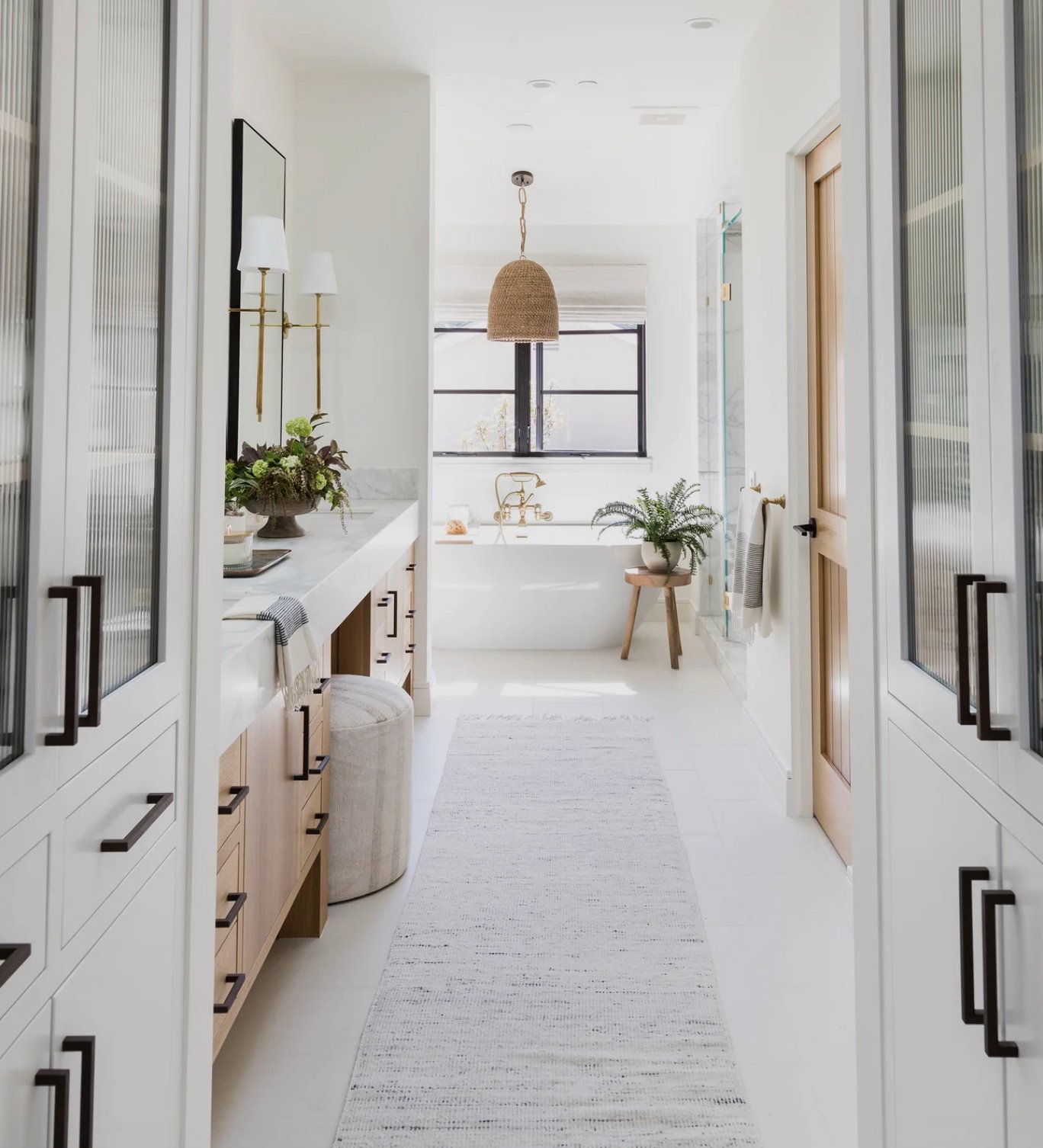
Cool Metals
Cool metals consist of chrome, nickel, stainless steel, and iron. These metals give off a sleek, modern vibe and are often used in contemporary bathroom designs.
Chrome – Chrome is a popular choice for bathroom fixtures because it adds a clean, shiny look. It is highly reflective and pairs well with other cool metals.
Nickel – Nickel comes in various finishes, such as polished and brushed. It has a slightly warmer tone than chrome and is known for its durability.
Stainless Steel – Stainless steel is best known for its corrosion-resistant properties, making it an excellent choice for bathrooms. Its cool, sleek appearance complements other cool metals for a cohesive design.
Iron – Iron fixtures and accents add an industrial touch to your bathroom. This metal can be used in various forms, such as wrought iron or cast iron, each with its unique aesthetic.
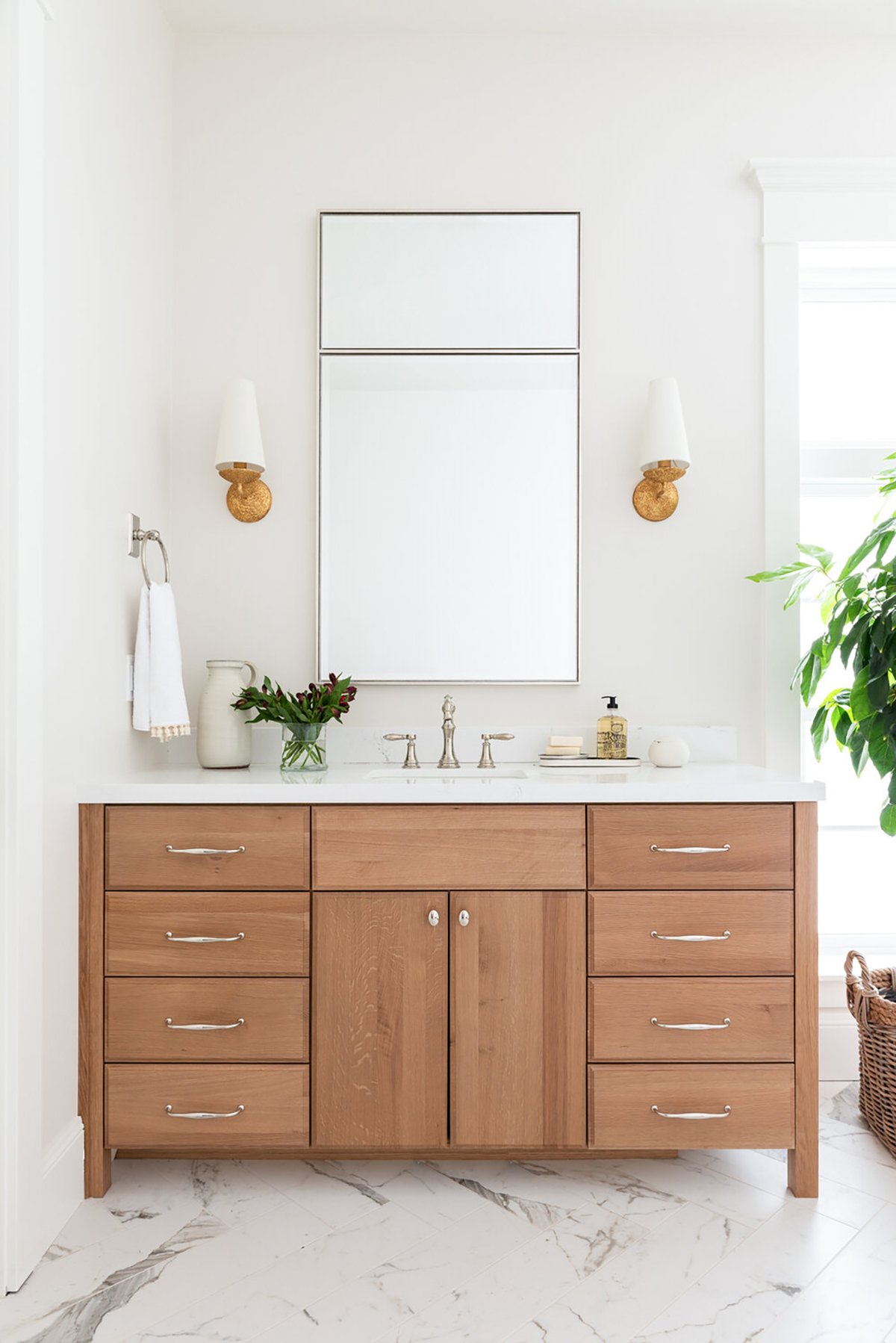
Bathroom Design Styles
Influences of Metal
Metal finishes have a significant impact on the overall look and feel of your bathroom. Choosing the right combination of metals can enhance various design styles, whether it’s traditional, rustic, or modern.
In a traditional bathroom design, warm metals like brass and bronze create an elegant and timeless atmosphere.
For a rustic look, consider using aged or distressed metals such as oil-rubbed bronze. These metal finishes add character and charm to the space.
On the other hand, a modern look benefits from cool metals like chrome and stainless steel, as they provide a sleek and minimalist touch.
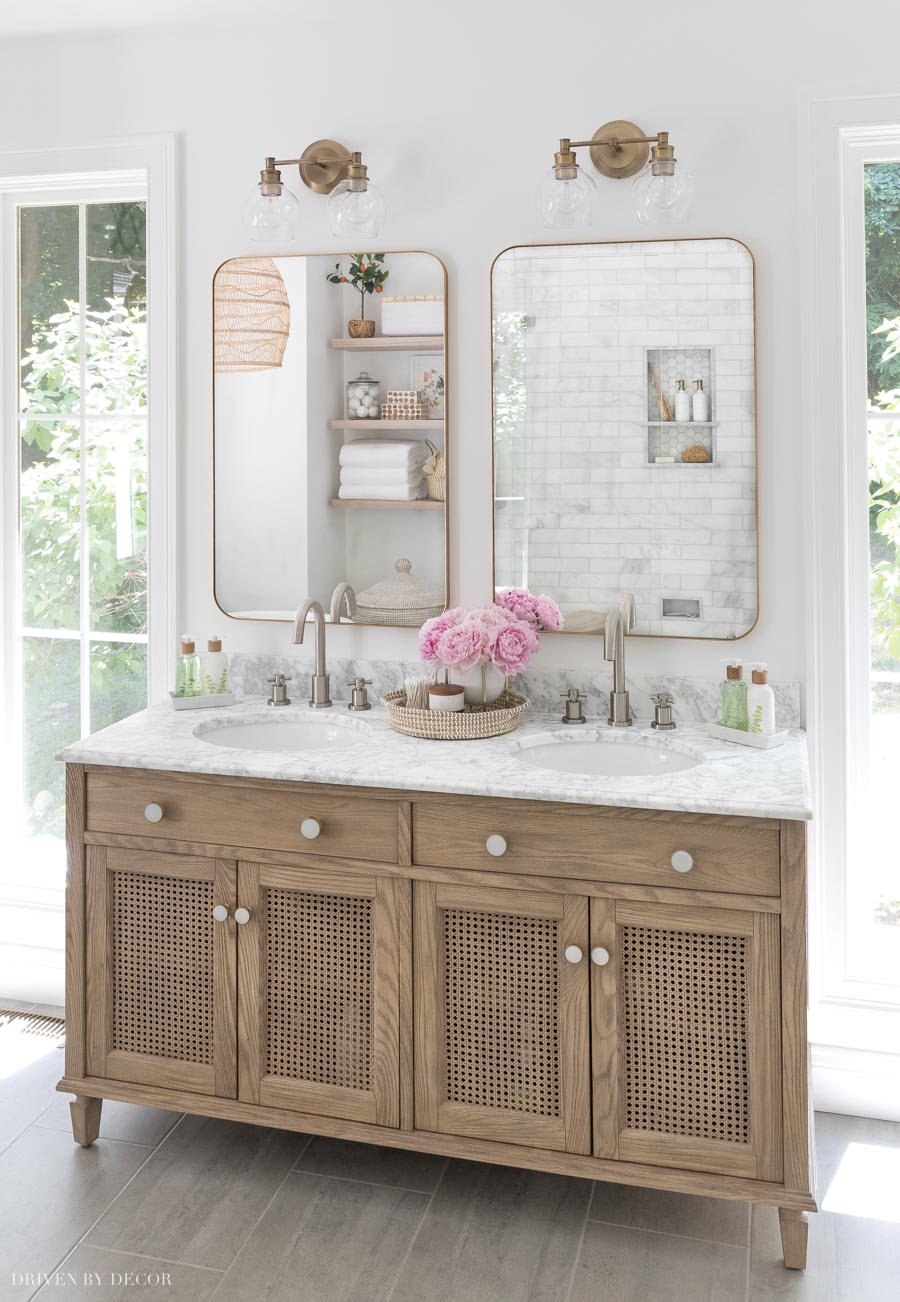
Trends and Themes
When it comes to setting the tone for your bathroom, the theme you choose plays a crucial role. Incorporating different trends and themes can help you establish a cohesive design while mixing metals.
- Traditional: A classic theme typically features decorative metal accents, such as polished brass or brushed gold. Balance the warm tones with cool metals like brushed nickel for a sophisticated look.
- Rustic: Embrace the charm of a rustic bathroom by incorporating textured metals like oil-rubbed bronze or aged copper. These finishes can blend seamlessly with natural materials such as wood and stone.
- Modern: For a contemporary design, opt for sleek, polished metals like chrome and stainless steel. These finishes create a clean and minimal aesthetic, perfect for a modern space.
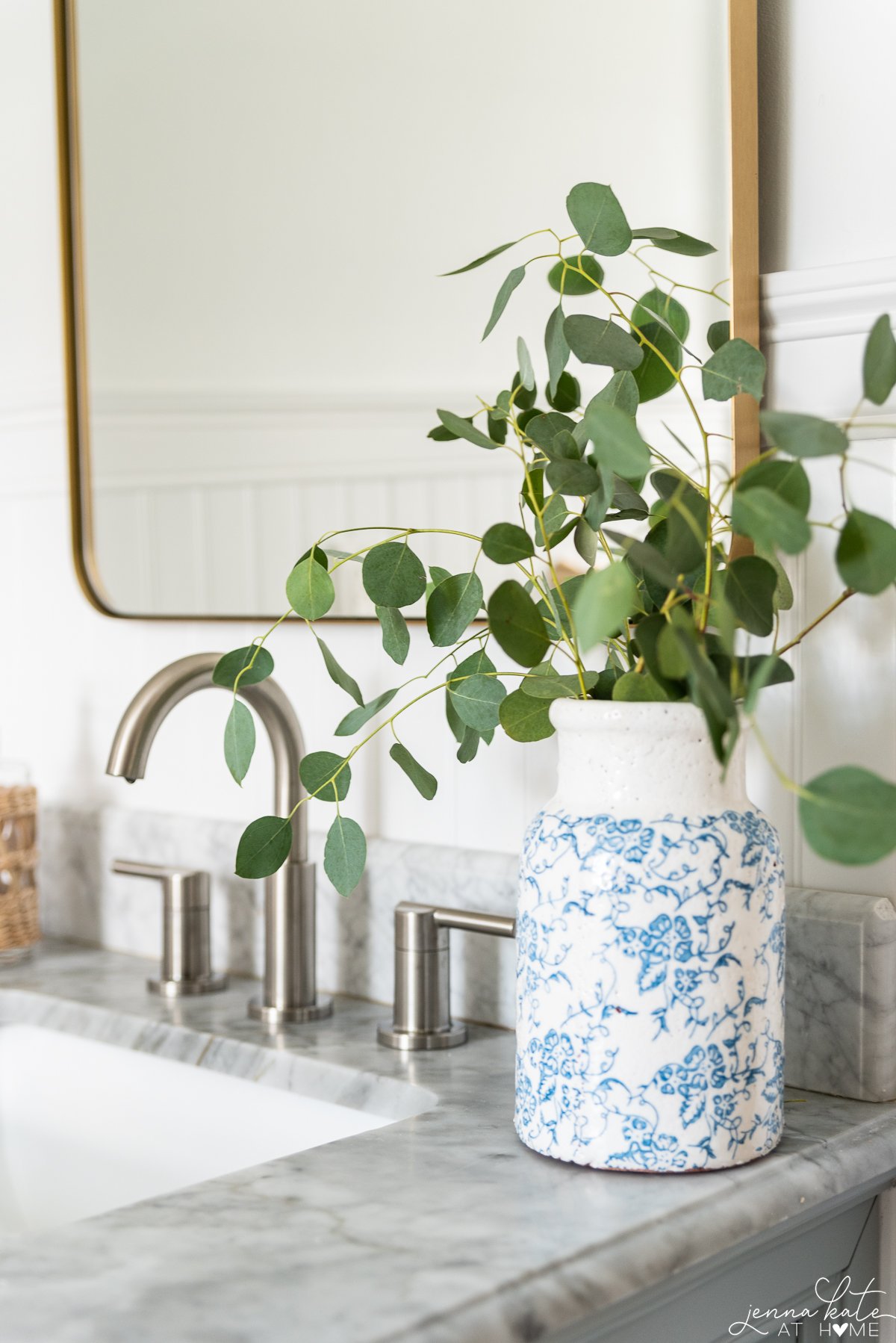
Remember, when mixing metals in your bathroom, the key is to strike a balance between warm and cool tones, as well as different textures and finishes.
By thoughtfully incorporating various metals into your bathroom design, you can create a unique and visually appealing space that reflects your personal style.
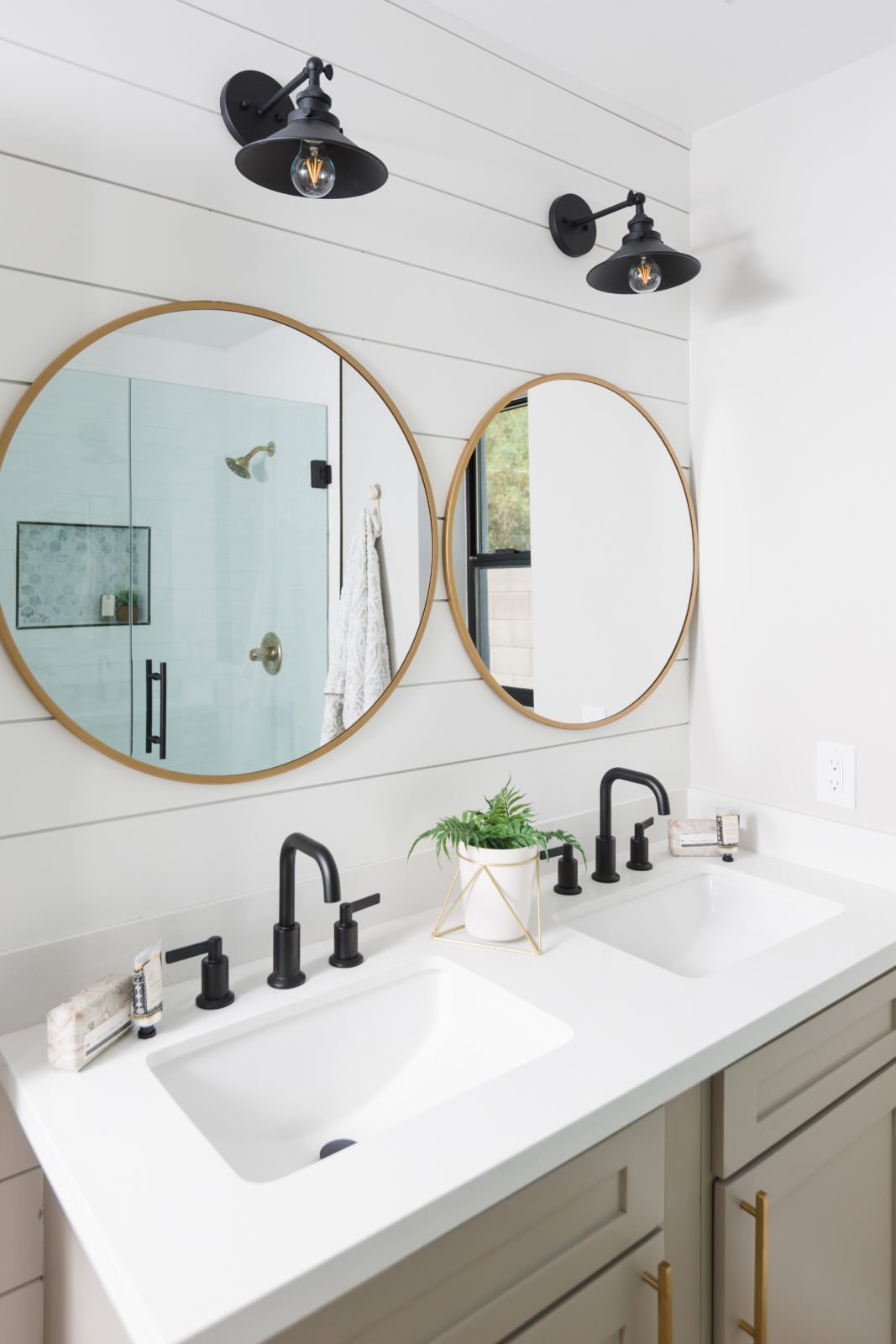
Frequently Asked Questions
You can easily combine chrome and brass in your bathroom by using them for different elements. For example, you could use chrome for your faucets and brass for your cabinet hardware. This way, both metals will be balanced and create a cohesive look. Don’t hesitate to experiment with using accessories, such as a cool-toned metal or a neutral black as a third element, to balance out your mix.
When mixing polished nickel and brass, consider using one metal as the dominant finish and the other as an accent. For instance, you could choose polished nickel for your main fixtures like faucets and lighting, while adding brass accents in mirror frames, cabinet hardware, or towel bars. Additionally, think about the undertones of each metal to ensure they work well together.
Blending chrome and black elements is quite simple as the latter is considered a neutral or cool-toned metal. You can use chrome for the main elements like faucets and shower heads, and incorporate black in smaller details, such as drawer pulls, towel rings, or light fixtures. Mixing these two metals will create a modern and sophisticated look in your bathroom.
To incorporate chrome and gold together in a bathroom, try to maintain a balance between the two metals. You could use chrome for the faucets and shower system while choosing gold for the lighting and accessories. Make sure both metals are evenly distributed throughout the space, and consider the overall color scheme of your bathroom to create a cohesive look.
To mix black and brushed nickel in your bathroom, choose one of the metals for the main fixtures and the other for accents. For instance, use brushed nickel for the faucets and shower heads, and incorporate black in the lighting fixtures, cabinet handles, or mirror frames. The key here is to maintain a balance while keeping in mind the undertones of each metal.
When mixing metals in your bathroom, consider using a combination of warm and cool metals to create a balanced look. Pick one dominant metal, and then use 1-2 others as accents.
Think about the overall design style and color scheme of your bathroom, as this will help you decide which metals will complement your space best.
Final Thoughts
Remember, first, you should consider the different metal finishes available, such as polished, brushed, or matte. To make it easier, curate 2-3 metals with similar undertones that work well together. You will want to select a primary metal, which will be the dominant element in the room. This could be a warm metal, like brass or gold, or a cool metal, like chrome or nickel.
Next, choose an accent metal to complement your primary metal. It’s important that the tones and undertones of both metals maintain a balance. Warm metals, like copper, brass, or bronze, can create a cozy atmosphere, while cool metals, like chrome, stainless steel, or nickel, can add a modern touch.
Remember, it’s okay to mix shiny with matte finishes as well as warm and cool tones.
Lastly, if you’re feeling adventurous, you could also introduce a third metal into the mix. This metal should be in the same color family as the primary and accent metals and complement both without overwhelming the design.
Now, are you excited to try your hand at mixing metals in your bathroom? Don’t be intimated by it! Look at your favorite bathroom styles, see how they’ve incorporated various metal tones, and go from there.
Most of all, don’t take it too seriously, and have fun with your design!

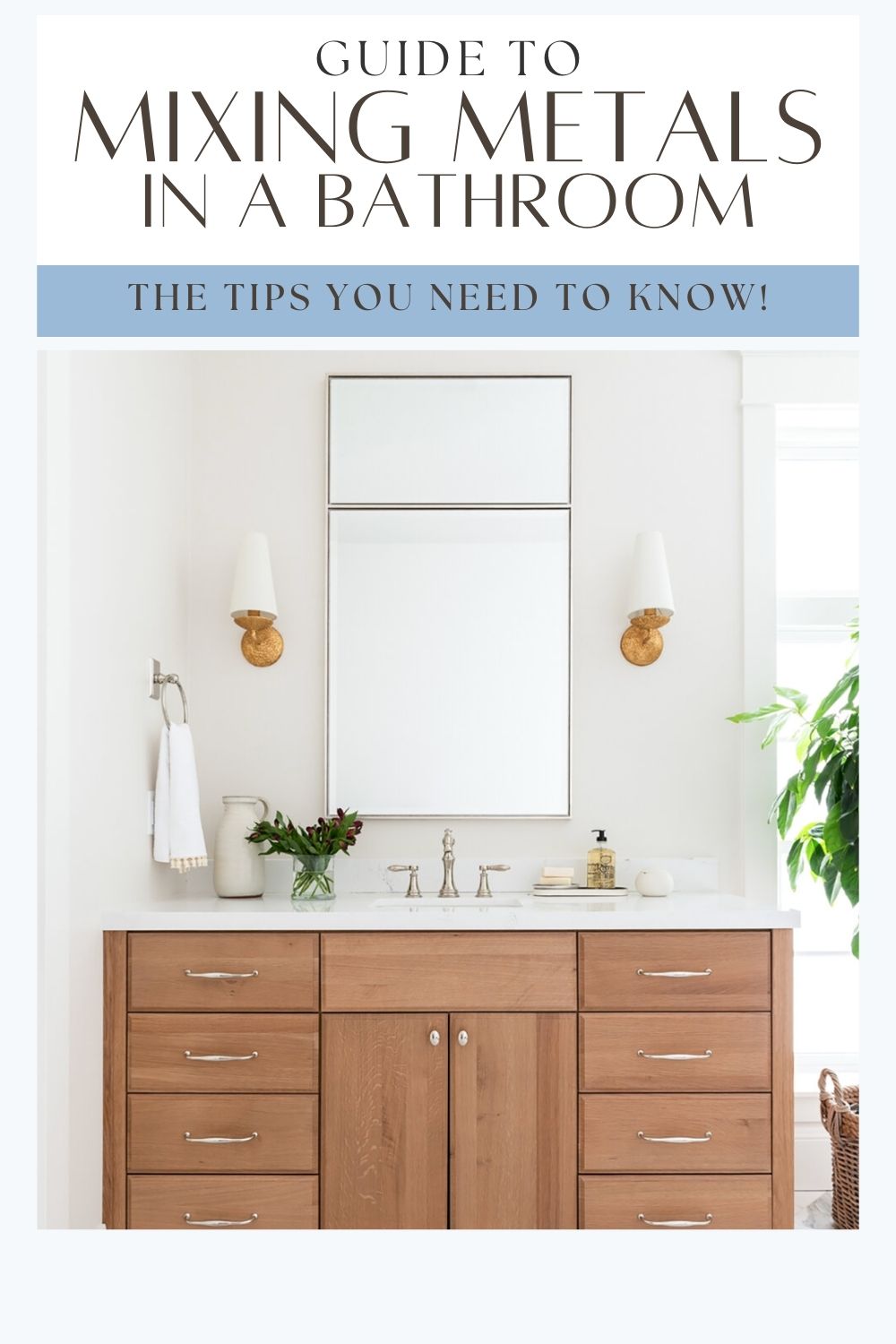


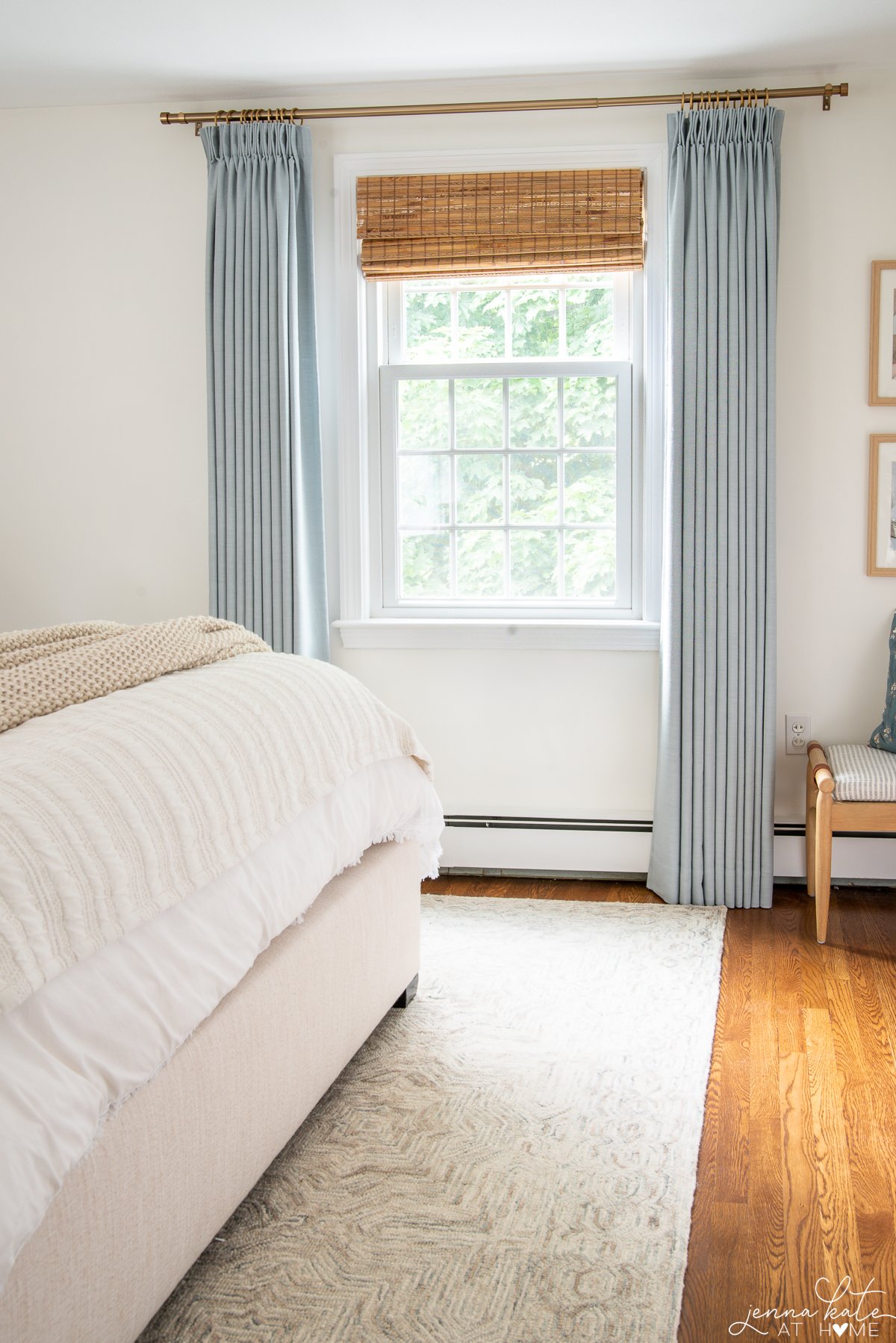
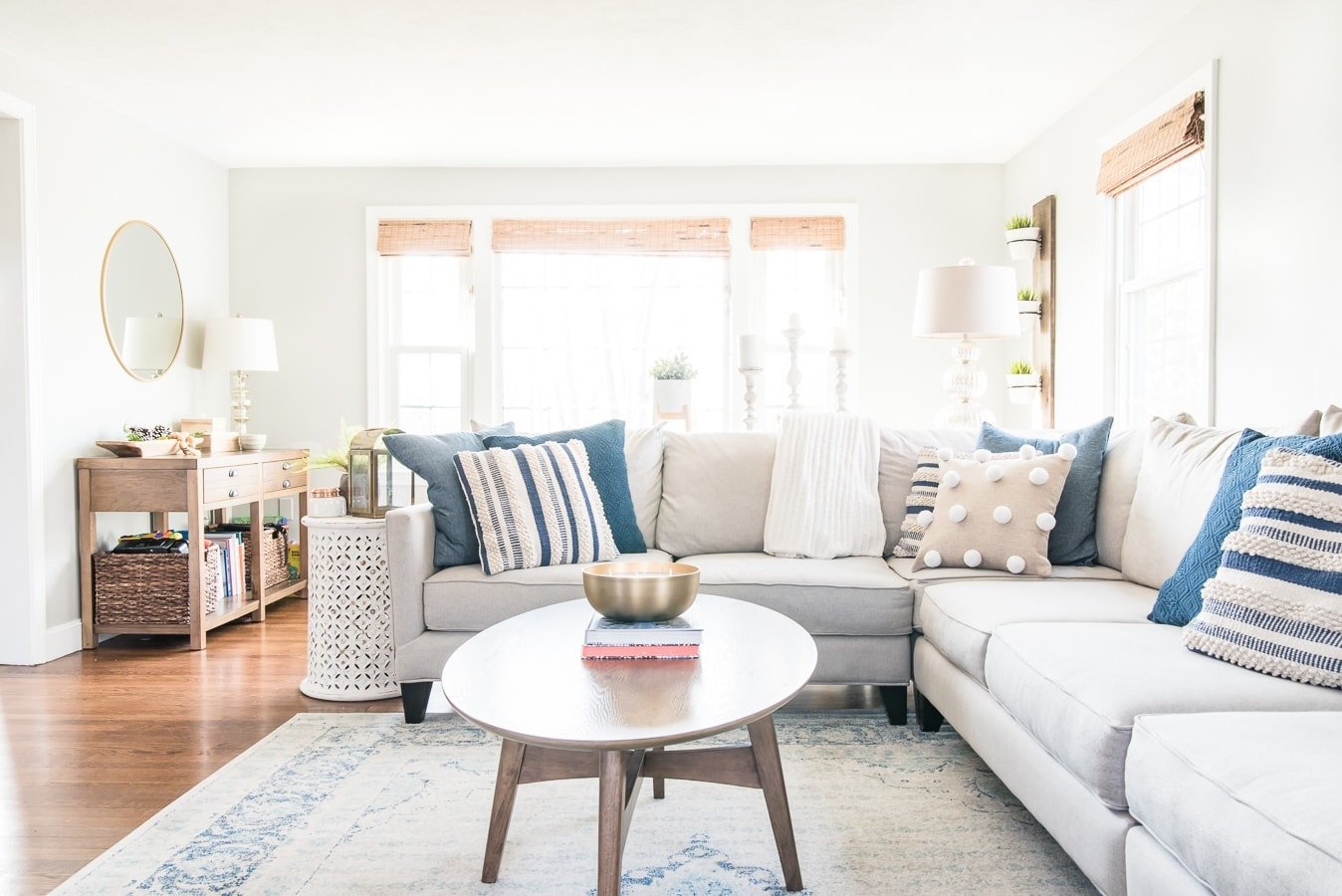
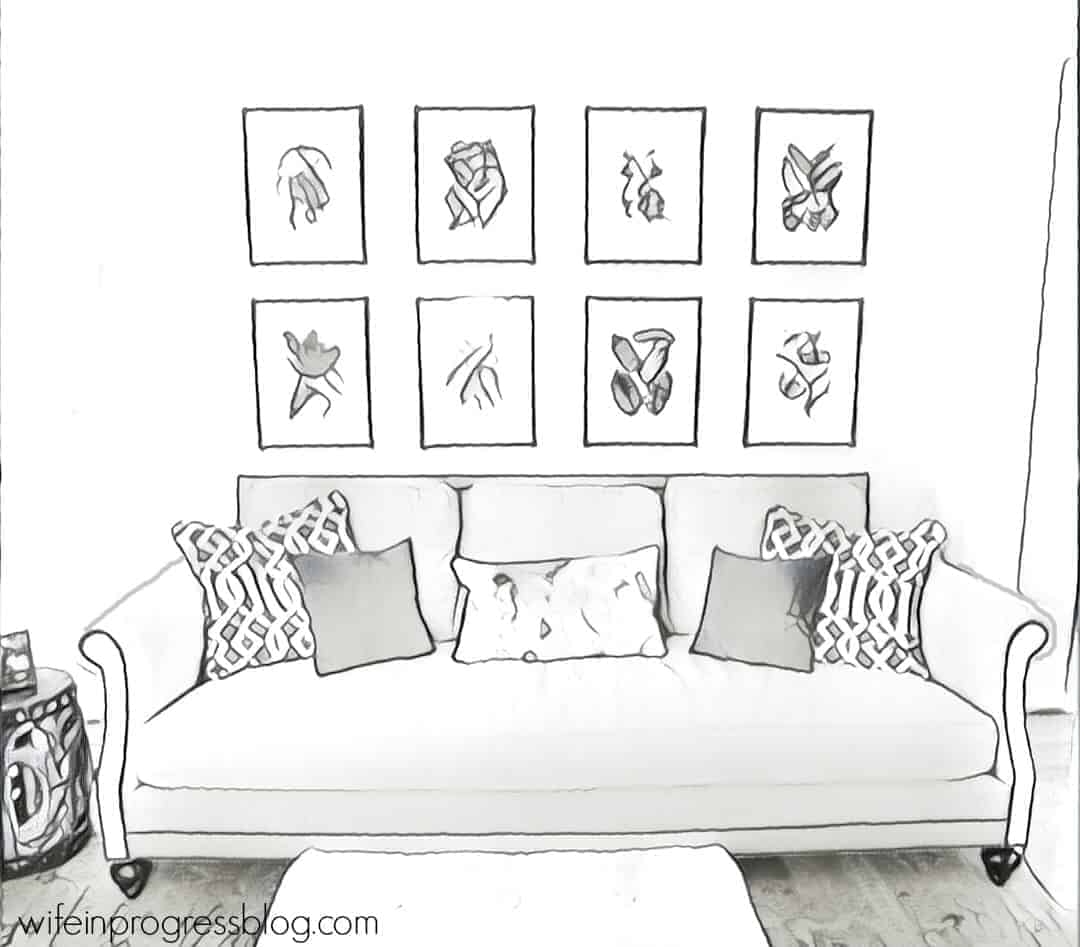
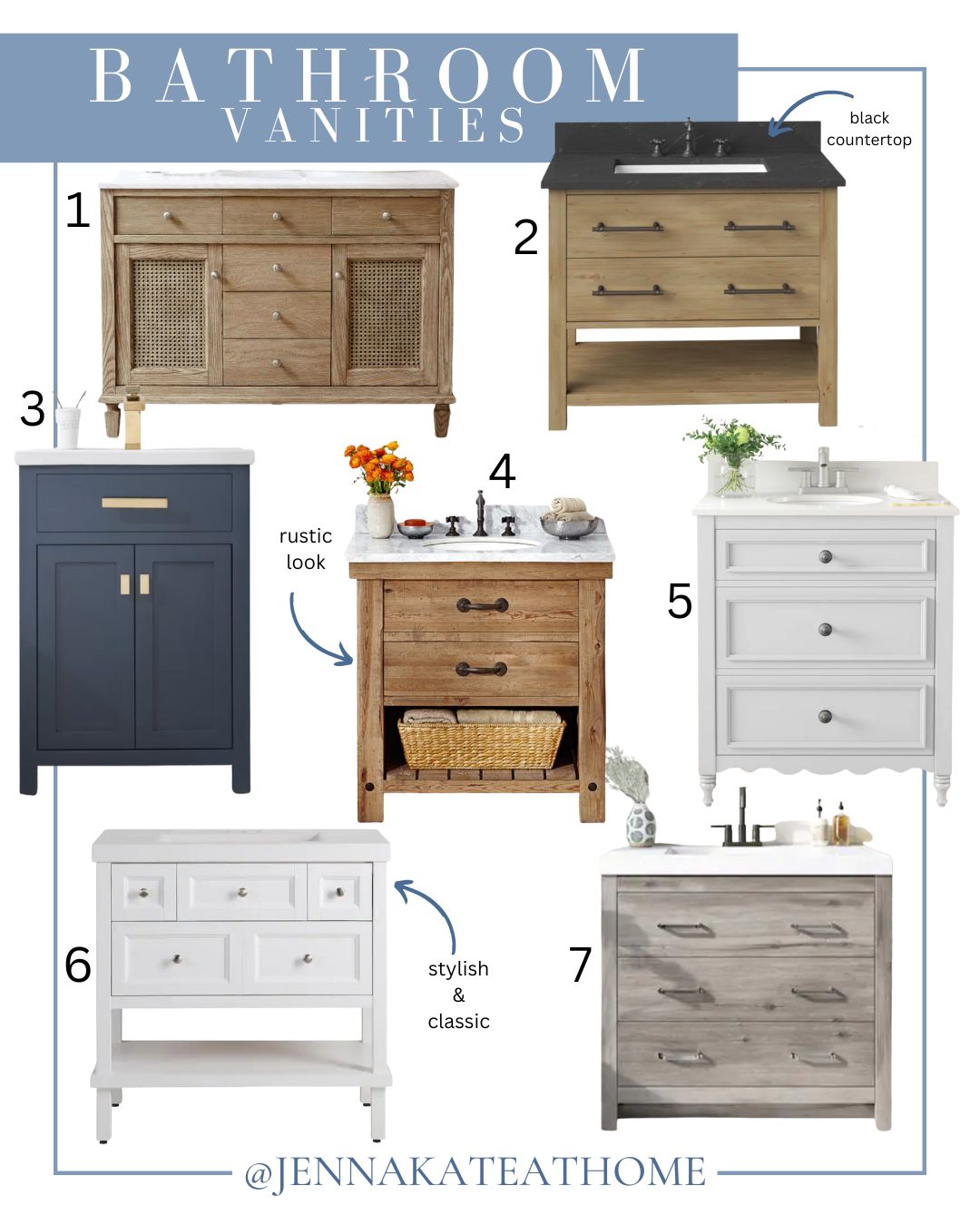
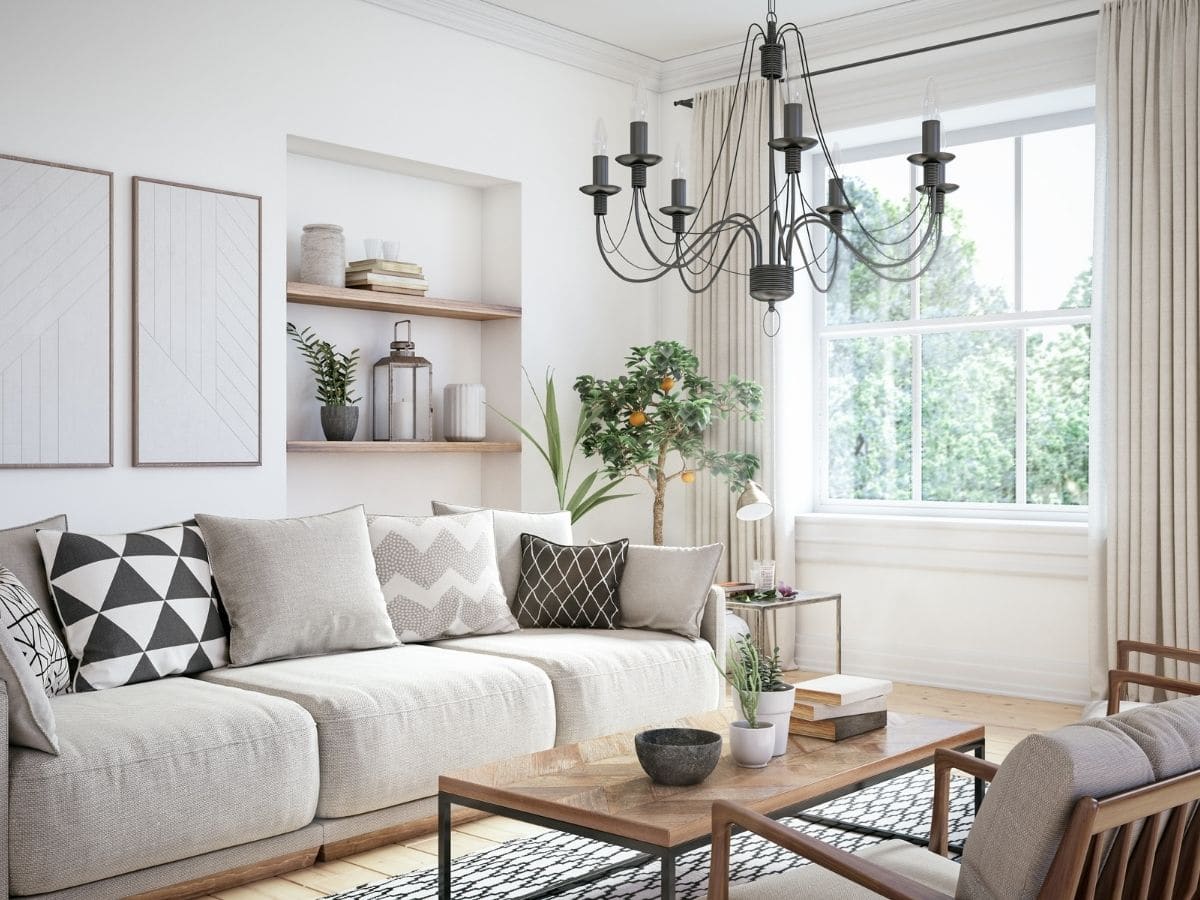
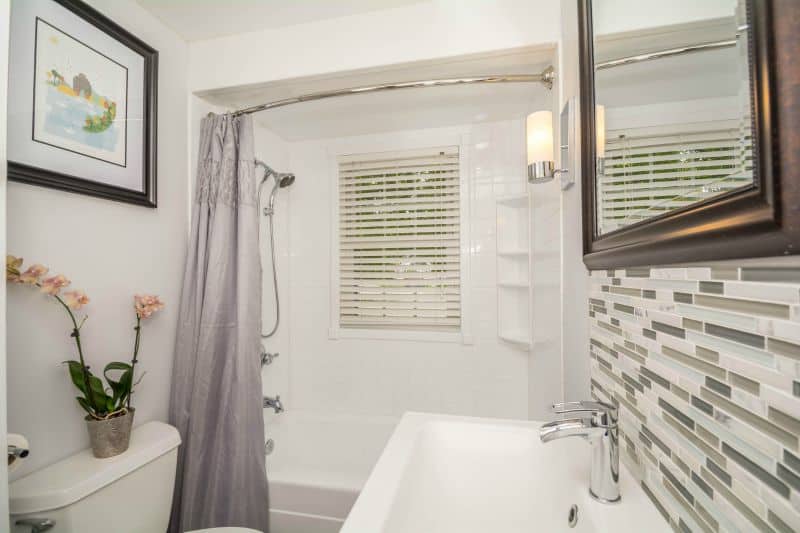
These are such great tips! We’re sharing a link to your post with our readers in our weekly roundup this week!